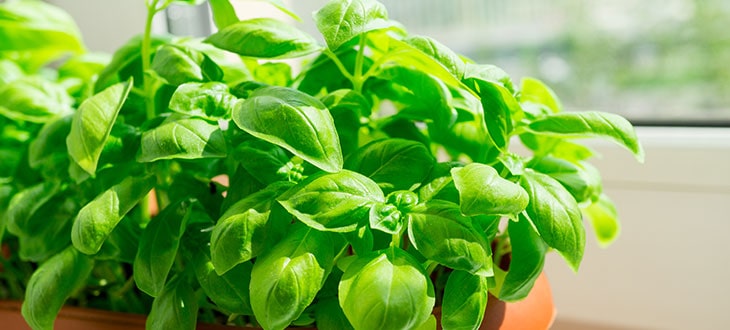How Much Sun Do Herbs Need?
How much sun do herbs need? Find out the sunlight requirements of some of the most common edible herbs grown at home.
Disclosure: This page contains affiliate links. This means that the owner of this website might be compensated for any qualifying purchases made via these links.
Herb gardens have become more and more popular, especially among beginner gardeners.
A herb garden is easier to care for because these types of plants don’t usually need much care. Herbs also don’t require too much space, and most of them can even be started in small containers as they don’t grow very large.
Growing your own edible herbs will also offer you a source of fresh and tasty spices for adding flavor to your dishes and salads.
However, there are a few things you need to consider when it comes to growing healthy herbs, and these include their sun requirements.
All green plants require sunlight to carry out photosynthesis and produce the energy they need. This also applies to herbs.
When herbs do not receive enough sunlight or are exposed daily to too much direct sun, visible signs such as yellowing, drying, or loss of leaves will occur.
Various Herbs Sunlight Requirements
The sunlight requirements vary slightly from plant to plant. However, most of the edible herbs commonly grown at home need about 6 to 8 hours of sunshine a day for healthy growth.
The list of herbs with similar sunlight requirements include plants like:
- Parsley
- Dill
- Basil
- Celery
- Fennel
- Oregano
- Rosemary
- Coriander
- Thyme
- Mint
Parsley grows well in full sunlight, but partial shade may be beneficial in very hot climates.
Dill thrives in full sun but needs to be protected from strong air currents as it produces tall hollow stalks that the wind can easily damage.
Basil grows well in direct sunlight, but in hot climates, it will also develop well in partial sun.
Celery performs best in places where it can get at least six hours of direct sunlight per day.
Fennel should receive 6 to 8 hours of full sun per day for healthy growth.
Most oregano varieties require at least six hours per day of direct sunlight, but some species grow best in part shade.
Rosemary needs a good amount of daily sun to flourish. Hence, it is recommended to plant it in areas that receive at least 6 hours of direct sunlight per day.
Coriander is a cool-weather-loving plant. It grows best when it receives several hours of morning sun and indirect light or light shade in the afternoon.
Thyme loves heat and thrives in full sun. Therefore, any location that receives about 6 to 8 hours of full sun daily will be suitable for this plant.
Mint can grow in partial shade and can flourish with minimal sunlight. While it can tolerate weak morning sun, the afternoon sunshine can harm the plant.
Sunlight For Indoors Herbs
You can enjoy fresh herbs for an extended period of time if you plant them in pots, or if you transplant them from your garden when the cold comes.
These plants also need sunlight and you need to make sure they can get as much as possible. So it is necessary to put the pots in a room or hall with large windows that allow plenty of light to reach the plants.
If you don’t have a space where the plants can get enough natural light from the sun, you can utilize a growing lamp. (affiliate link)
Grow lamps imitate the natural sunlight, allowing you to grow plants indoors, even in dark rooms where there is no natural light.
Final Word
Choosing a location with the proper amount of sunlight is essential for your herbs’ growth. If the plants do not get enough sun, they will not develop properly.
As mentioned above, most herbs require between 6 and 8 hours of direct sunlight every day. However, there are also plants that grow better in part shade or which can be negatively affected by too much direct sunlight. Hence, it’s advisable to study the sunlight requirements for each plant type.


